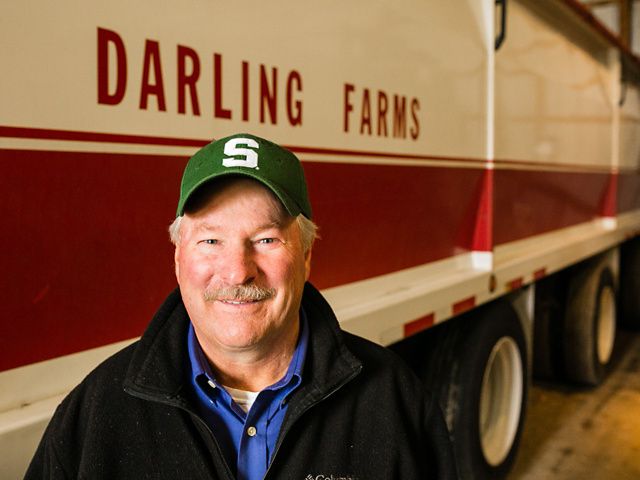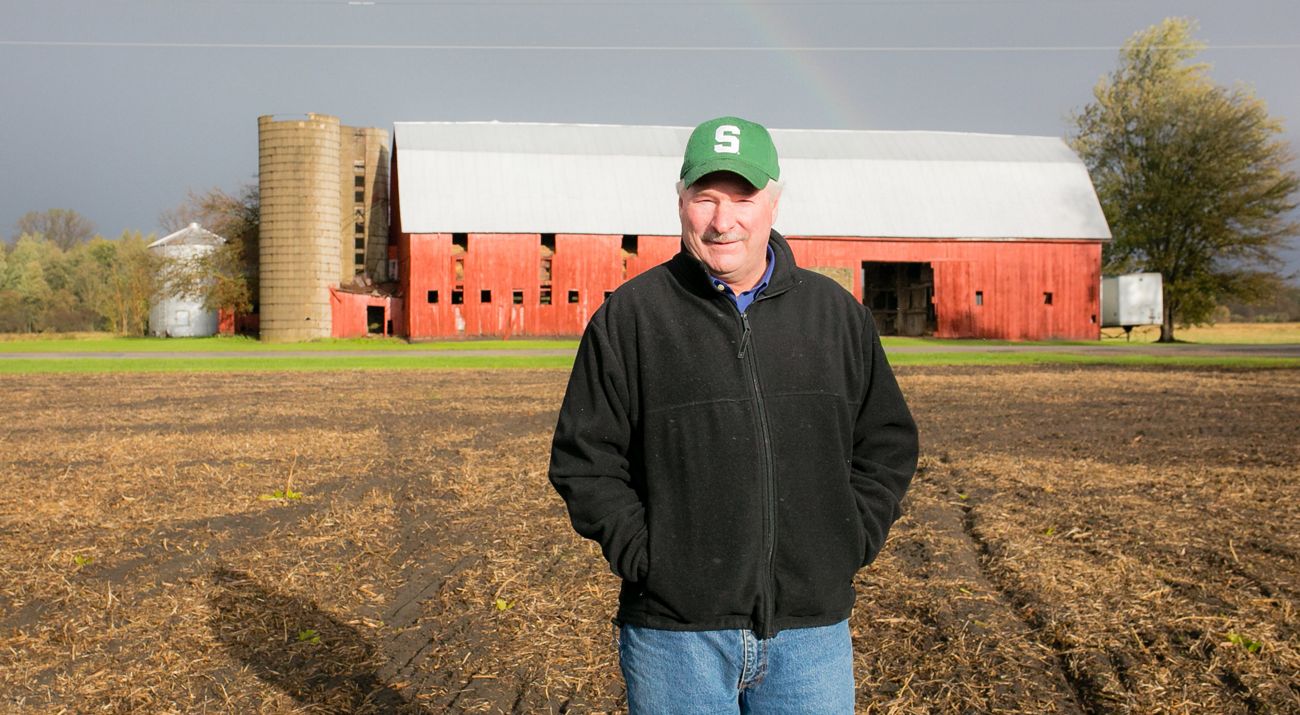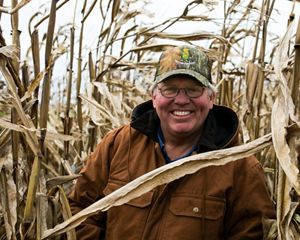Farmers at the Forefront of Soil Health
See how other farmers are building a sustainable future on their lands.
See Their StoriesDoug Darling is not afraid to experiment with new approaches to farming. Science fascinates him, so much so that when his boys were young he would leave NASA press releases about new discoveries in the universe next to their morning cereal bowls, telling them “always be curious in life; be unafraid to try new endeavors.”
Darling follows his own advice on his family’s 1,600-acre Michigan farm, testing out soil health practices to boost yields and save money, like no-till (planting without plowing first), cover crops (noncash crops planted for the benefit of soil) and the 4Rs of nutrient management—applying the right source of fertilizer at the right rate and the right time in the right place. “Any time a farmer can look at new practices,” he says, “there’s the opportunity to improve on what we’re doing, or improve profitability, because in order for us to continue farming long term, we have to be profitable.”
Darling does a standard crop rotation of corn, followed by soybeans, followed by wheat on the sixth-generation family farm. The rotation optimizes fertilizer use and controls plant diseases. The Darlings also grow a small amount of hay, and until 1991 raised dairy cows.
Quote: Doug Darling
Cover crops capture and keep the money that’s in the bank, the nutrients that are in the soil. They add organic material and help mellow the soil, and it’s the right thing to do for the environment.”
Cost Savings and Environmental Benefits from No-Till
Darling’s father started no-till in 1981 for economic reasons. “When you look at $1.90 corn and expensive diesel fuel, every time you run a piece of equipment over a field, it’s costing you money,” says Darling. By the mid-1990s, the Darlings had reached one half no-till, and today they are at three-quarters no-till. The remainder is deep tilled, on a rotation basis, usually after harvesting wheat.
“When we first tried no-till in the early 1980s, we progressed because we saw the cut in the costs of production for what we were doing. . . . When you’re tight on man power, no-till helps.”
Conservation tillage has additional benefits, says Darling.
“We’ve found that no-till can be just as profitable, and in some cases more profitable than doing it conventional.” Two years ago, he recalls, a no-till field yielded 193 bushels of corn per acre, while an adjacent, deep-tilled field yielded only 191 bushels per acre. “All that time, all that diesel fuel, wear and tear on the equipment, and we had a better yield on the no-till, right next door.”
Indeed, Darling is regularly awarded for having the highest corn yields in Michigan for both no-till and minimal till.
No-till also makes the soil looser and more porous. “It’s a little easier for the plants to get their roots down to where the nutrients are. They have a little easier time following the water,” he says. That makes for healthier plants and, generally, better yields.
Crop residues left on the field also help retain the moisture in dry years and minimize soil erosion. The timing of rain and soil temperatures in the spring can influence which practice has the better yield, which is why the family continues to do both no-till and deep, or minimal, till.

Keeping Nutrients in the Soil and Out of Waterways
About a decade ago, the Darlings began experimenting with cover crops. The idea was not such a foreign concept to Darling, who remembers planting wheat and oats onto corn silage fields after the harvest, to help maintain the soil organic matter, back when the family had dairy cows.
Cover crops “capture and keep the money that’s in the bank, the nutrients that are in the soil,” says Darling. “They add organic material and help mellow the soil, and it’s the right thing to do for the environment.”
To further keep nutrients like nitrogen and phosphorus on their farm and out of waterways, the Darlings contract with a company certified by the 4R Nutrient Stewardship Certification Program to apply their fertilizer. This company employs best practices such as applying liquid fertilizer to corn at planting time close to the seed, and for soybeans, they use a system that applies the fertilizer directly on the leaves right where the plant needs it.
Darling also devotes 49 acres to grass filter strips, the “simplest, easiest, least expensive thing a farmer can do to help mitigate nutrient runoff,” he says. Filter strips are grassy strips that are not cultivated at the edge of fields. The grass helps filter out excess fertilizers before they reach local waterways.
More broadly, Darling’s farm is certified by Michigan’s Agriculture Environmental Assurance Program (MAEAP), an innovative program that helps farms of all sizes voluntarily reduce agricultural pollution risks. Darling finds the program cost effective. “Just about any farmer that’s gone through the MAEAP process will tell you they found it saved them money, or made them more productive, or it minimized their cost or risk.”
“You’ve got to stay curious,” he says, “got to keep reading things and looking at what new things are coming out. Somethings you evaluate and say, ‘Hey, that’s not going to work on my farm’ or ‘I can’t afford it.’ And other times you say, ‘We’ll try this and see if it works.’ And if it does you keep on using it.”

